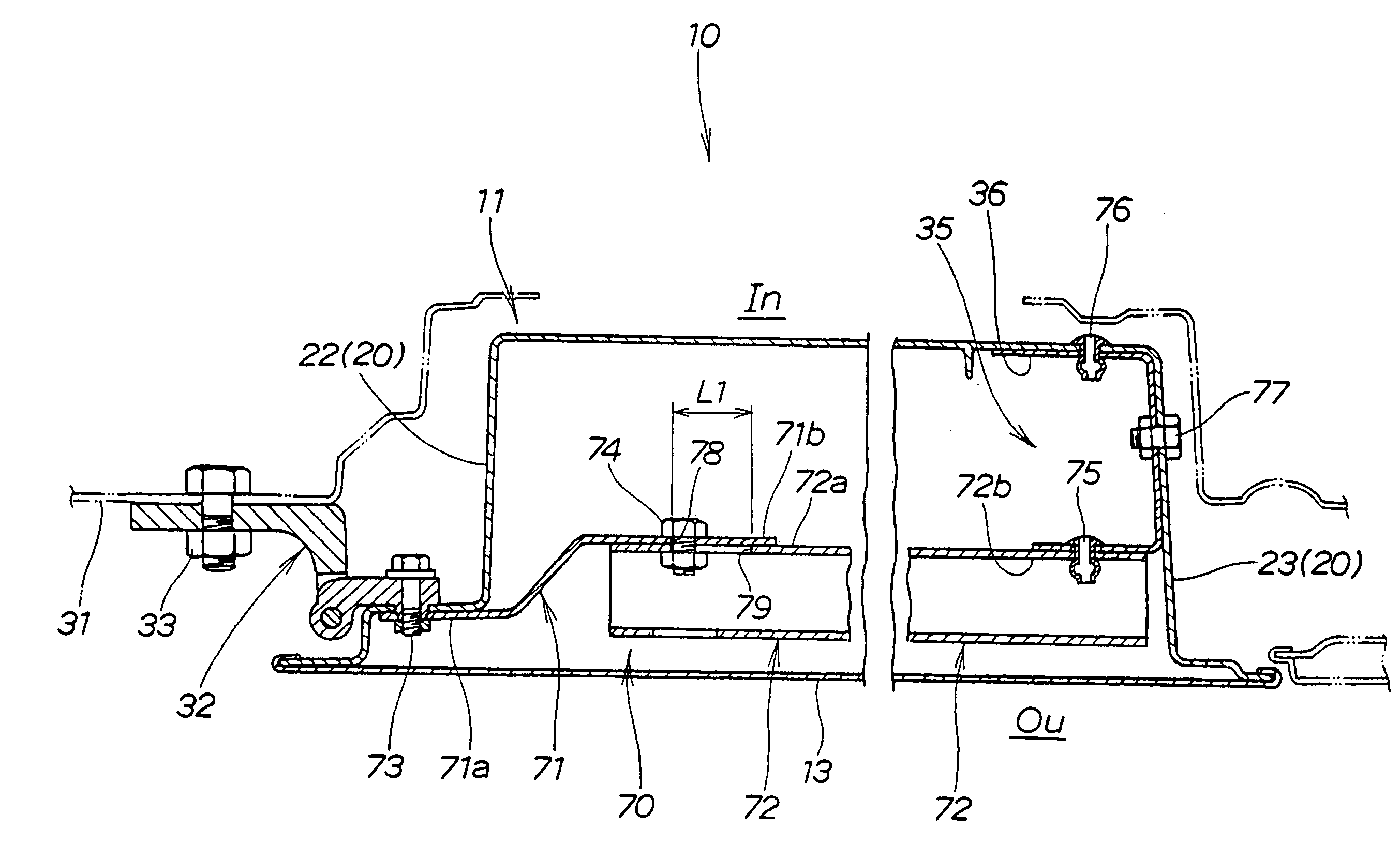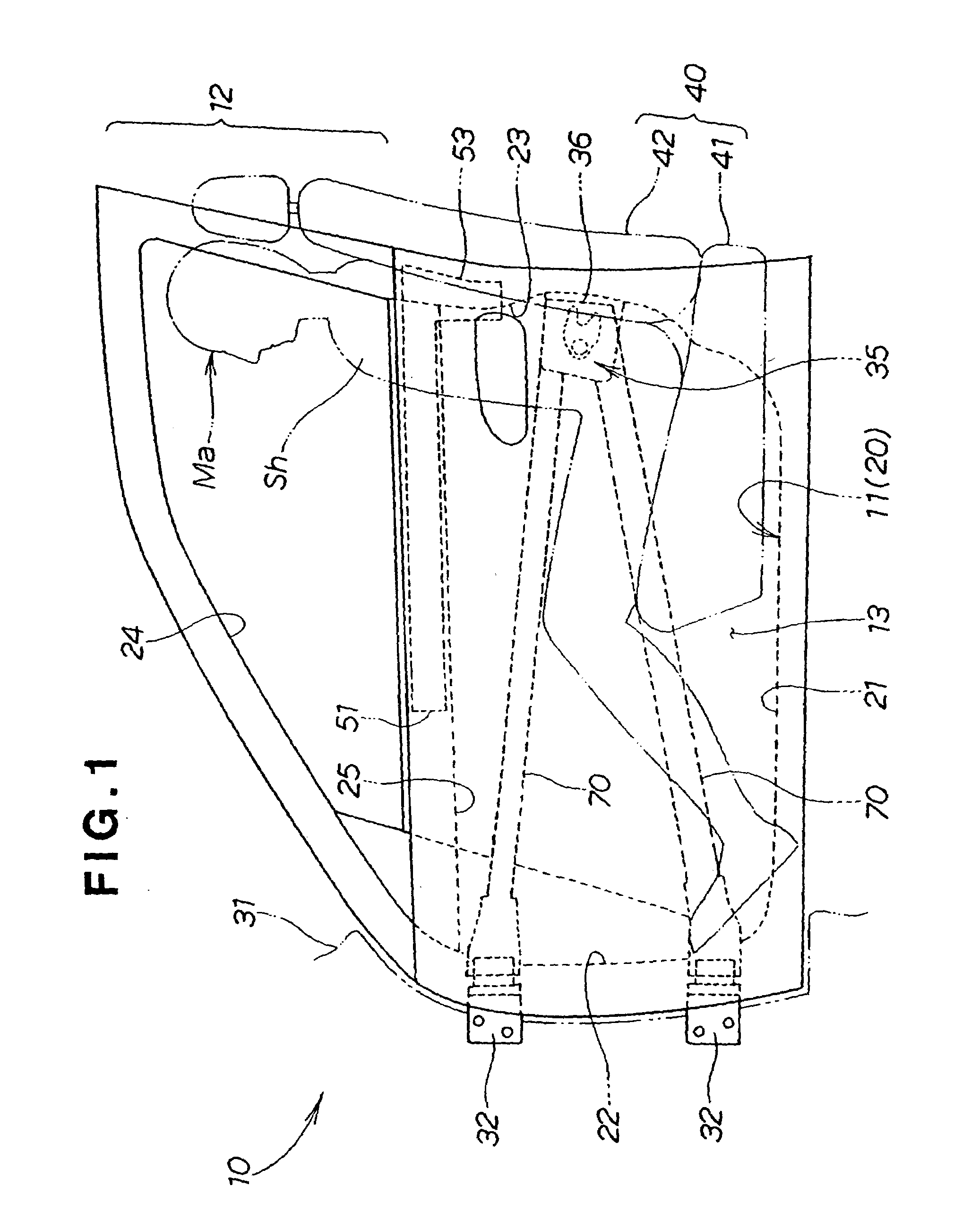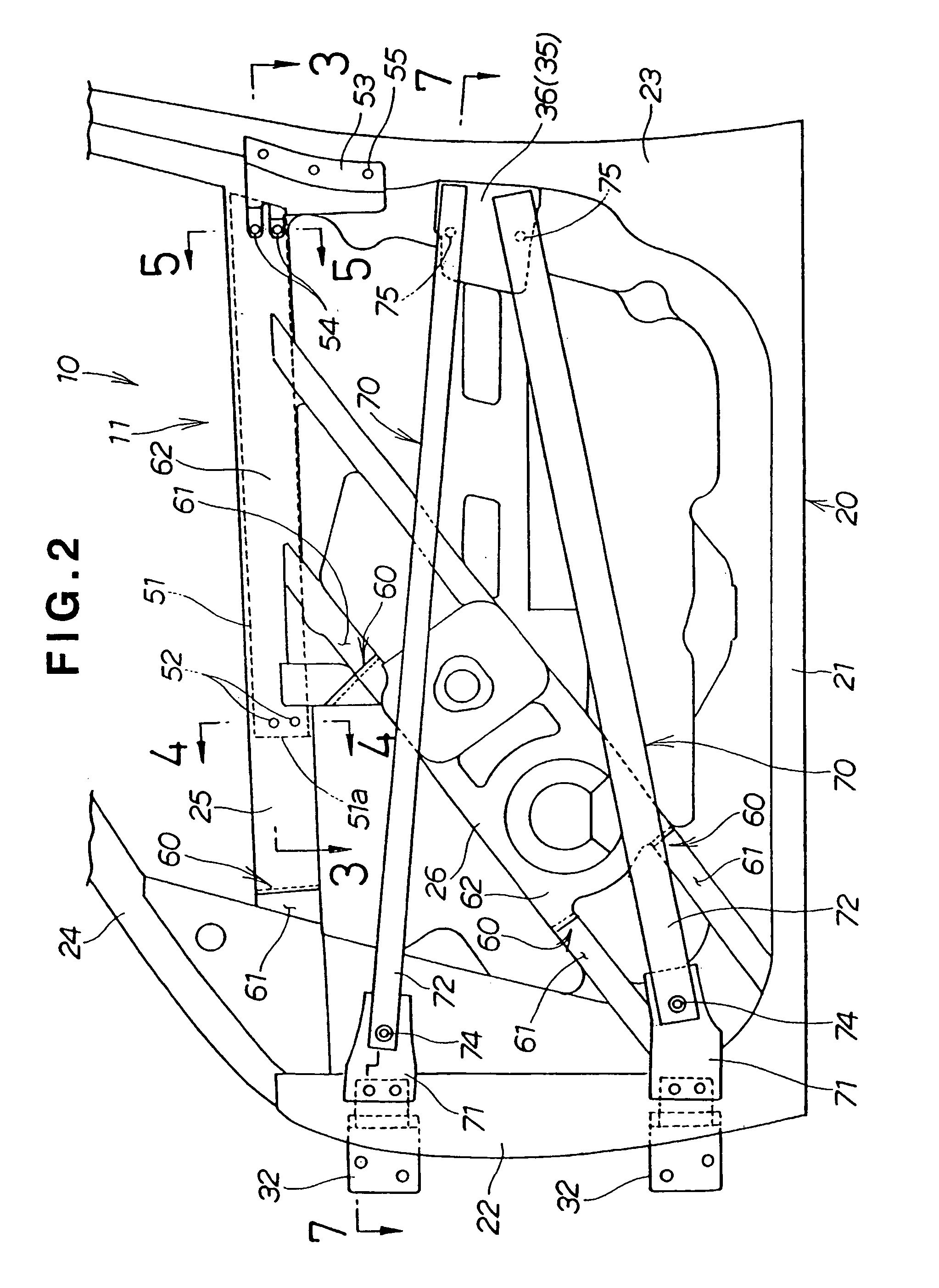Vehicle door
a technology for vehicles and doors, applied in the field of vehicles, can solve the problems of difficult deformation plastically of the first dividing element toward the interior of the vehicle compartment, and achieve the effects of reducing the impact force transmitted from the door beam to the door lock section, reliably releasing the locking state, and reducing the impact energy applied from the front of the vehicle body
- Summary
- Abstract
- Description
- Claims
- Application Information
AI Technical Summary
Benefits of technology
Problems solved by technology
Method used
Image
Examples
Embodiment Construction
[0019]FIG. 1 shows a structure of a left front door 10 of a full-door type vehicle as viewed from a left side of the door 10. The door 10 is composed of an inner door panel 11 having a window sash 12 formed integrally with an upper end portion thereof, and an outer door panel 13 joined with an outer side—i.e., a side facing a viewer of the figure—of the inner door panel 11. The door 10 is mounted for opening and closing movement with a door frame 20 of the inner door panel 11 attached via upper and lower hinges 32 to a vehicle body 31 denoted by a phantom line in the figure, and it is held in the closed position by means of a door lock section 35 secured to the door frame 20.
[0020]The window sash 12 is a component holding therein a door glass (not shown) in such a manner that the glass can be raised and lowered along the sash 12. In this description, the terms “inner door panel” collectively refer to a combination of the panel 11 and window sash 12.
[0021]The door frame 20 of the inn...
PUM
 Login to View More
Login to View More Abstract
Description
Claims
Application Information
 Login to View More
Login to View More - R&D
- Intellectual Property
- Life Sciences
- Materials
- Tech Scout
- Unparalleled Data Quality
- Higher Quality Content
- 60% Fewer Hallucinations
Browse by: Latest US Patents, China's latest patents, Technical Efficacy Thesaurus, Application Domain, Technology Topic, Popular Technical Reports.
© 2025 PatSnap. All rights reserved.Legal|Privacy policy|Modern Slavery Act Transparency Statement|Sitemap|About US| Contact US: help@patsnap.com



